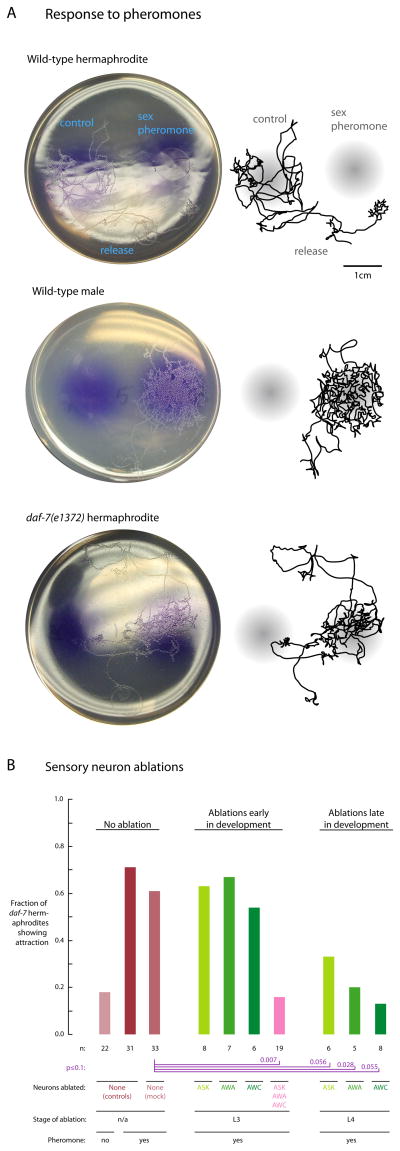Figure 1. Sex pheromones elicit attraction behavior in wild-type males and daf-7 hermaphrodites; this behavior requires the same sensory neurons, and in both cases these neurons compensate for one another.
A. Sex pheromones elicit sexual attraction in wild-type males and daf-7 mutant hermaphrodites, but not wild-type hermaphrodites. Tracks on agar assay plates (single animal, 3 hrs elapsed) show that both wild-type males and daf-7 mutant hermaphrodites find a spot containing hermaphrodite sex pheromones and linger, but wild-type hermaphrodites do not. Photos of assay plates are on the left; hand tracings are on the right to assist in visualization. Quantitation is shown in Supplemental Figure 1.
B. Sexual attraction in daf-7 hermaphrodites requires the core sensory neurons AWA, AWC, and ASK, which compensate for one another. Simultaneous laser ablation in L3 larvae of the ASK, AWA, and AWC pairs of core sensory neurons (six pairs total, pink bar) reduces the attraction behavior of daf-7 hermaphrodites to a frequency comparable to background. Ablation of each pair singly in L3 larvae (each pair one at a time, green bars) does not appreciably affect attraction (compared to mock-ablated animals). In contrast, ablation of each pair singly in L4 larvae reduces the attraction behavior of daf-7 hermaphrodites to frequencies similar to the triple L3 ablation. The difference between L3 and L4 ablations is indicative of compensation, as observed for male sexual attraction.

